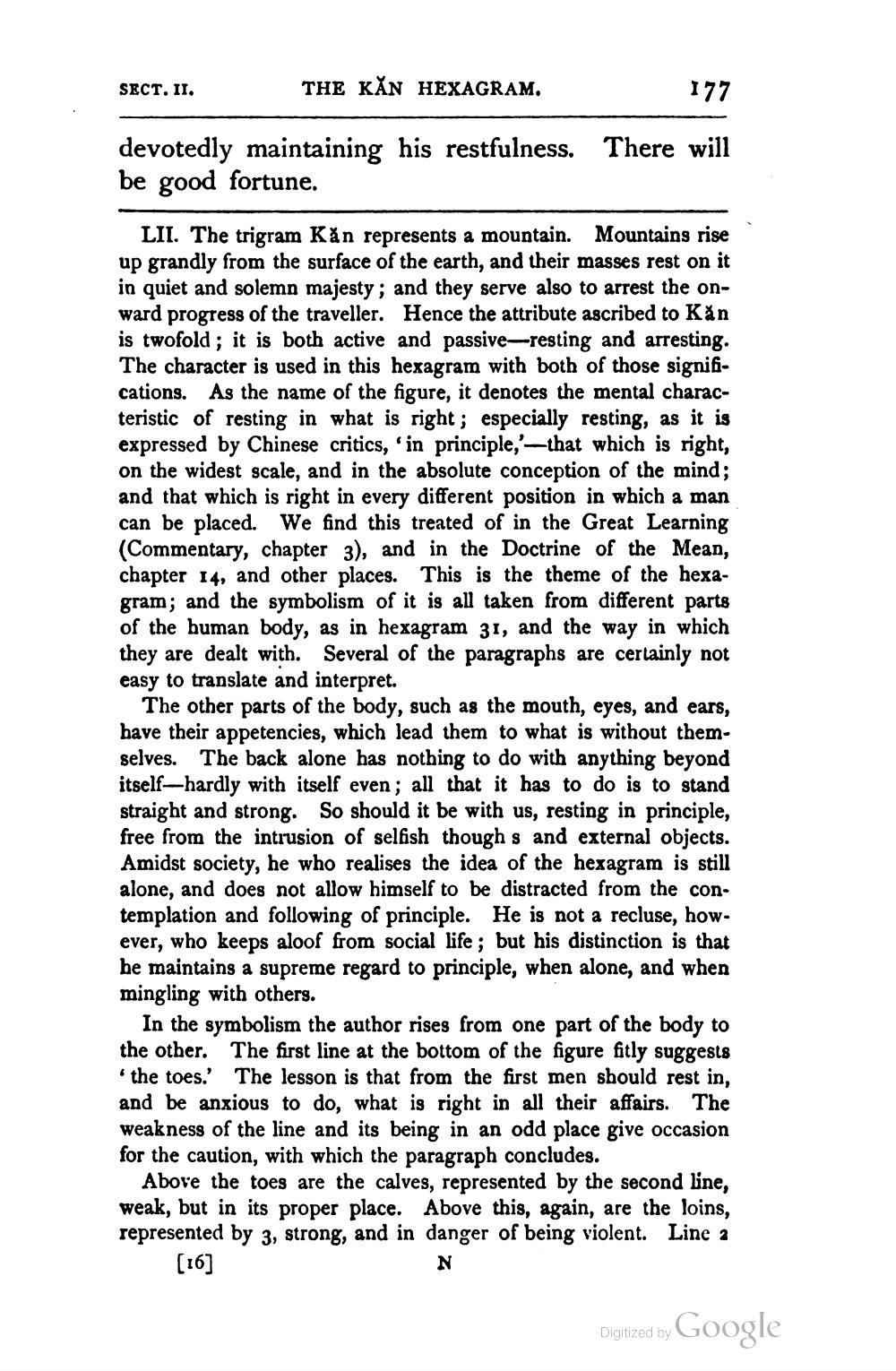________________
SECT. II.
THE KẢN HEXAGRAM.
177
There will
devotedly maintaining his restfulness. be good fortune.
LII. The trigram Kån represents a mountain. Mountains rise up grandly from the surface of the earth, and their masses rest on it in quiet and solemn majesty; and they serve also to arrest the onward progress of the traveller. Hence the attribute ascribed to Kån is twofold; it is both active and passive-resting and arresting. The character is used in this hexagram with both of those significations. As the name of the figure, it denotes the mental characteristic of resting in what is right; especially resting, as it is expressed by Chinese critics, 'in principle,'--that which is right, on the widest scale, and in the absolute conception of the mind; and that which is right in every different position in which a man can be placed. We find this treated of in the Great Learning (Commentary, chapter 3), and in the Doctrine of the Mean, chapter 14, and other places. This is the theme of the hexagram; and the symbolism of it is all taken from different parts of the human body, as in hexagram 31, and the way in which they are dealt with. Several of the paragraphs are certainly not easy to translate and interpret.
The other parts of the body, such as the mouth, eyes, and ears, have their appetencies, which lead them to what is without themselves. The back alone has nothing to do with anything beyond itself-hardly with itself even; all that it has to do is to stand straight and strong. So should it be with us, resting in principle, free from the intrusion of selfish though s and external objects. Amidst society, he who realises the idea of the hexagram is still alone, and does not allow himself to be distracted from the contemplation and following of principle. He is not a recluse, however, who keeps aloof from social life; but his distinction is that he maintains a supreme regard to principle, when alone, and when mingling with others.
In the symbolism the author rises from one part of the body to the other. The first line at the bottom of the figure fitly suggests
the toes.' The lesson is that from the first men should rest in, and be anxious to do, what is right in all their affairs. The weakness of the line and its being in an odd place give occasion for the caution, with which the paragraph concludes.
Above the toes are the calves, represented by the second line, weak, but in its proper place. Above this, again, are the loins, represented by 3, strong, and in danger of being violent. Line 2 [16]
N
Digitized by Google




